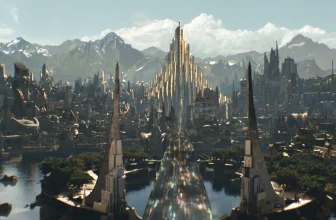The taxi dropped me off in the middle of nowhere and left me to climb for twenty minutes up and down a maze of steps until I finally reached the entrance of the second Istanbul Design Biennial, an experience that instantly allowed me to understand the implications of the motto of the Biennial borrowed from Paul Valéry: “The future is not what it used to be.” Originally this phrase referred to the social and political upheavals of the interwar period, but it is perhaps no less appropriate today.
Istanbul is the largest urban agglomeration in Europe, the commercial, historical, and geographical center of Eurasia. Described by Biennial director, Deniz Ova, as “one of the world’s most vibrant cities and a unique platform for experimentation with different thematic approaches,” and Cornell Architecture Professor Esra Akcan added that the city’s 2013 Gezi protests, “were the biggest mass mobilization to date in the name of architecture.” It is the moment to find one’s direction in a different but somehow similarly chaotic situation.
The curatorial team made fine historical research on prescriptive manifestoes for the future, beginning with the publication in Le Figaro of The Futurist Manifesto of Feb. 20, 1909, and including Marx and Engels’s Communist Manifesto (1848), Adolf Loos’s Ornament and Crime, (from a lecture of 1910 and published in 1913) Le Corbusier’s treatise Vers une architecture(1923) and others less well-known.
Despite a certain nostalgic charm, Rem Koolhaas noted the problem with such prescriptions when he remarked that, “The fatal weakness of manifestos is their inherent lack of evidence.” By the time he came of age as an architect in the 1970s, it was apparent that many of the visionary schemes of modern architects and designers of the early twentieth century had failed to deliver on their promises of social well-being and equality, and the communal promise of the technological revolution came increasingly into question. Not surprisingly, there was a growing sense that the age of the manifesto was over.
Paradoxically, Biennal curator Zoë Ryan remarked that manifestos’ large claims and loud proclamations issued mostly from male voices, and their predominantly Western origins now seem anachronistic. Notwithstanding, her curatorial concept still seemed almost entirely rooted in Western and male voices. The sense in which her statement evoked similarity with Turkish culture was, as Esra Akcan noted, a predominance of the passive voice. “Using the passive voice in Turkish is more common than it is in English, and even desirable (even when the subject is clear).
It implies collectivism, an awareness that the agency of the world is in the acts of the individual.” The Design Biennial compelled all participants to give short answers to the big questions. In this regard, Zoë Ryan concurs with Emily Pilloton: “In the future, we need the design world… to stop talking big and start doing good.”
Speaking personally, I enjoyed the exhibition. It was reassuring to find that for a Design Biennial, both the exhibition space and the exhibition itself were very well designed. One successful strategy was to use part of Galata Greek Primary School as an exhibition space for the Biennial, thereby presenting contemporary design with the backdrop of a traditional late nineteenth-century building, while another part of the building was still used as a primary school. This implicit interaction with pupils evoked an intuition of how design links past and future with every aspect of our daily lives.
Stamen Design (San Francisco) “the leading creator of cool-looking maps” made a colorful Mapmaker Manifesto in order to create a conceptual portrait of where we are now and to connect the process of mapmaking to the visualization of where we are going by asking: “What does ‘you are here’ mean to you?” As a byproduct of the information explosion, the Mapmaker Manifesto no more prevents us from feeling lost than do many other info-graphics. And we also get lost in the navigational sense of the word.
Playing with the N°41 Workout Computer from Bless Design (London) is as much fun as anything at the Biennial. Originally a fashion house, Bless started a new living and striking statement against a work routine seated in front of a screen that, through its immobility, causes aches and pains that require an investment of time in exercise in order to remedy. But due to its impractical features, Bless risks becoming outmoded as quickly as does fashion.
“Appropriate existing aesthetics instead of making new ones” is the method of STUDIO FORMAFANTASMA (Amsterdam) and revealed through their work Open Manifesto. Their Perch fish hot water bag of “vegetal tanned perch skin” certainly achieved this goal, but other objects, while original, seemed to appropriate only materials. Crafted In Istanbul has a similar idea, creating an online mapping system that will render craftspeople more visible and accessible, thereby making it possible for designers to work with them. By such means, Aziz Tavil already made a beautiful and comfortable Fakir inspired by the bed of nails; and Olmaz İşler’s Boynuz (English: [animal] horn) is also an example of good design combined with traditional craft. Hopefully, “keeping dying crafts alive as cultural values is a dream of carrying history into the future” now will not remain only a dream.
J.Mayer.H (Berlin)’s work always resembles large-scale sculpture or installation. This time he has made a real installation work, Nap Gap. Since all projects require a written wish for the future, his own “Sleep more often” clearly derives from the restless lives of architects.
Exiting the second Istanbul Design Biennial, I strolled across the Galata Bridge, where Atelier Bow-Wow (Tokyo) presented a Public Drawing that describes the location as a special typology of public space, one that joins two sides of the city but also functions as a kind of city in itself, hosting a variety of activities such as fishing, cooking on boats, eating on the street, and waiting for the bus. The oily water from the fish market under the bridge flows as it has done for hundreds of years. From the Design Biennial back to reality, nothing really changes. Just as the past was not what it has become so the future is not what it will become.
Why can’t we find the answers? Since the 1970s we have dreamed of Alison Clarke’s idea “to open outward beyond Eurocentric concerns.” But still dominated by Western discourse and ideology, and with the undiminished conflict between Western and Eastern cultures, do we still really question such a condition? Or is globalism really a pretext to justify cultural domination by feigning to dissolve the values of regional cultures into a “world culture” while really upholding transnational corporate interests and the governments that benefit from them? Que será será.
Written by: 嘉 Jia





